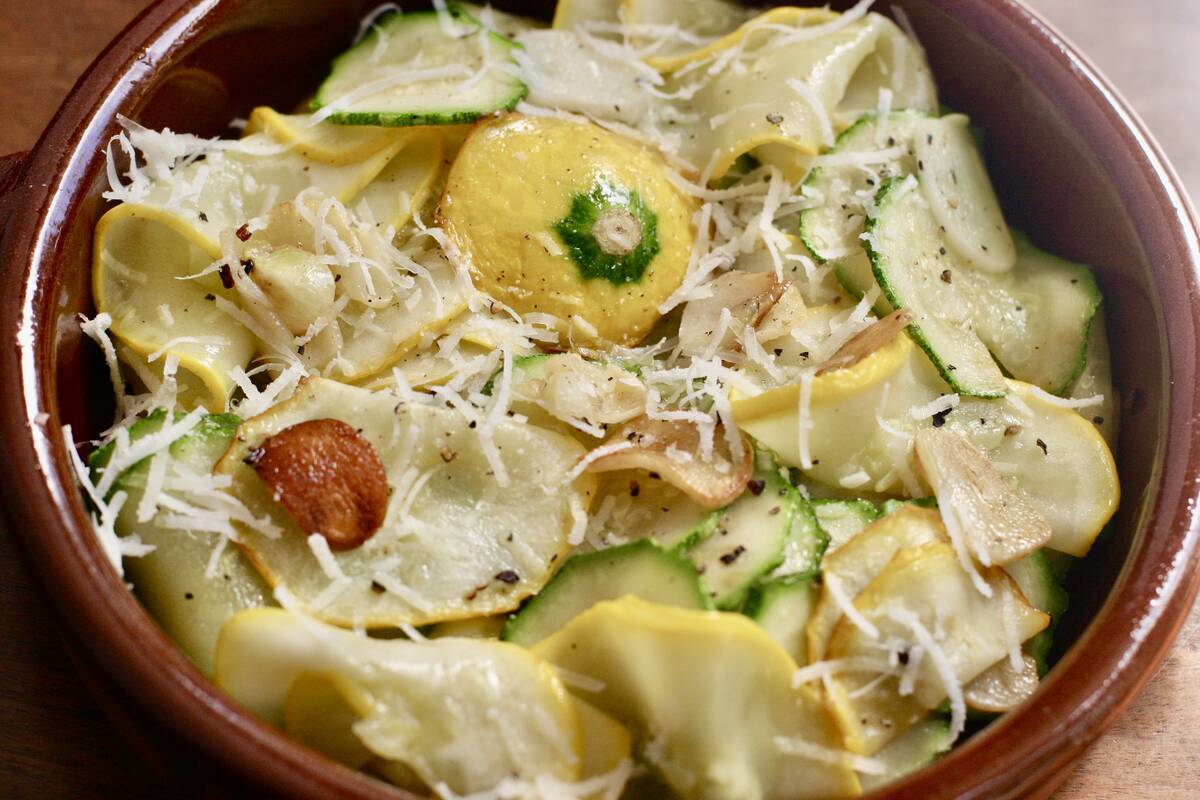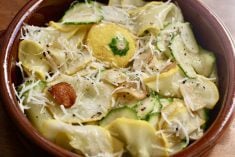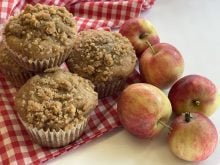Do you know what trans fats are? Many of us do not. But they are lurking in many foods that we consume on a regular basis and recently, nutrition experts raised the red flag. This type of fat could endanger our health, and the health of our growing children.
After watching a recent television report, I went to buy rice cereal for my baby daughter.
I was shocked to read on the label that it contained partially hydrogenated oil. Yuk. Should the food that is recommended for babies’ first food not be made with healthy ingredients?
Read Also

Try these great ways to use summer squash in season
Summer squash is harvested before it fully matures, which means its skin is still tender and full of flavour. Here are some great summer squash recipes for you to try.
After some searching I found a brand that did not contain trans fat. Immediately, my motherly instincts kicked in and I wanted to become more educated about trans fat, especially when my children are eating it. I had at this point been approached by several readers who also wanted answers about the news that appeared nationally. So I went to work to answer your questions and mine.
One study that caught my eye, since I am still breast feeding my baby, showed that infants can get high doses of trans fat because their mothers are eating it. Also, research from the University of British Columbia showed the fats pass through the placenta to the fetus.
My research turned up a great resource from Toronto Public Health that answered many questions:
What is a trans fat?
Trans fat (also known as trans fatty acids) forms when liquid oil is changed into a solid fat, for example when a vegetable oil is made into margarine or shortening. The term used for this process is hydrogenation.
How does trans fat affect our health?
There is accumulating evidence to show that our bodies treat trans fat as if it were saturated fat. It increases the bad LDL (low density lipoprotein) cholesterol in the blood. There is concern that the level of trans fat in our diet is too high.
Many think that the current dietary level of trans fat is partly associated with heart disease, cancer, diabetes and obesity. Researchers also think that trans fat may have a negative effect on our immune function, reproduction and lactation.
What foods contain trans fat?
Most of the trans fat in our diet comes from processed foods such as commercial baked goods, fried foods, margarine and shortening. This includes foods such as cakes, cookies, chips, crackers, doughnuts, french fries and, yes, some baby cereals.
Why isn’t trans fat ever mentioned on packaging?
Nutrition labelling legislation does not require that trans fat be listed on food packages. But Health Canada will require the information on packaged foods within the next three years.
How much trans fat is safe?
In July 2002, the National Academy of Sciences issued a report that stated there is no safe level of trans fat. In other words, avoid this type of fat as much as possible. But that doesn’t mean that foods free of trans fat but that are high in saturated fat are OK. In fact, Canadians consume far more saturated fat than trans fat. The bottom line – both fats should be limited.
Here are some tips to lower the trans fat in your diet:
- Follow Canada’s Food Guide to Healthy Eating, which emphasizes grain products, and vegetables and fruit that are naturally low in fat. Choose low-fat milk products as well as leaner meats, poultry and fish. Try to choose dried peas, beans and lentils more often. Call your local public health office for a copy of the guide.
- Eat less fat. By cutting down on your total fat intake, you will automatically reduce the amount of trans fat and saturated fat in your diet.
- Limit processed foods. They are the major sources of hidden trans fat. This includes cookies, crackers, baked goods, potato chips, french fries and other deep-fried foods.
- If using margarine, choose a soft tub margarine, which tends to contain less trans fat than harder margarines, and spread thinly.
There are some soft tub margarines that are non-hydrogenated and have no trans fat. Some examples are Becel, Olivina, Our Compliments Supreme, 7 Reasons Non-Hydrogenated, Fleischmann’s Non-Hydrogenated and Fleischmann’s 10% Olive Oil.
- Read nutrition labels. Watch for anything that contains vegetable shortening, or partially or fully hydrogenated vegetable oils.
Healthy alternatives include:
- Trans-free frozen french fries: Cascadian Farm Oven French Fries, McCain Low Fat French Fries, McCain Superfries, President’s Choice Organics. Or try homemade fried potatoes – cut sweet potatoes into wedges, brush with canola oil, sprinkle with seasoning and bake.
- Trans-free snack foods: Kettle Chips, Lay’s Classic Regular, Miss Vickie’s Original, President’s Choice All Dressed, Ruffles Regular, Terra Sweet Potato Chips.
- Trans-free cookies and bars: Country Choice Sandwich Cremes, Country Choice Vanilla Wafers, Health Valley Granola Bars, Nature Valley Granola Bars, President’s Choice Organic Granola Bars, ShaSha Bread Co. Ginger Snaps.
- Trans-free crackers: Elco Rice Crackers, Finn Crisps, Hot Kid Rice Crisps, New York Flatbreads, President’s Choice Low Fat Wheat Crackers, Wasa Crackers.
- Trans-free frozen waffles: Life-stream Flax Plus Toaster Waffles, Nature’s Path Optimum, Van’s Original Belgian Waffles Power Waffles.
To avoid trans fat bake your own cookies, cakes and quick breads using canola oil or a soft tub margarine labelled non-hydrogenated.
Source: Today’s Nutrition, Fall 2003 by Leslie Beck.
Here are some trans fat-free recipes your family will enjoy.
Cranberry chicken
4 chicken breasts or thighs 1 14-ounce can whole 398 mL
cranberry sauce
1/2 cup French salad 125 mL
dressing
1/2 cup water 125 mL
1 Knorr vegetable soup mix
Mix cranberry sauce, French dressing and water together. Line chicken in a covered casserole dish. Pour sauce over chicken. Sprinkle with vegetable soup mix. Bake covered for 45 minutes in 350 F (180 C) oven. Uncover and bake for an additional 10 minutes. Serves four.
I enjoy this chicken served with rice or baked potato and a green salad.
Strawberries in a basket
This dessert is light and looks elegant. Great for entertaining in the holidays.
1 angel food cake mix
2 15-ounce packs 425 g
frozen sliced strawberries in syrup, thawed
2 envelopes of Knox gelatin 1/2 cup sugar 125 mL
2 tablespoons lemon 30 mL
juice
2 1/2 cups whipping 625 mL
cream
Make angel food cake according to package directions. Cool completely. Drain strawberries, reserving liquid. Add water to liquid to make two cups (500 mL). Combine gelatin and sugar in saucepan. Stir in strawberry liquid and lemon juice.
Bring mix to a boil, stirring to dissolve gelatin. Chill until starting to set, approximately one hour. Beat one cup (250 mL) whipping cream. Beat gelatin mixture on high speed until light. Fold in whipped cream and drained strawberries.
Hollow out the cake by cutting around cake 11/4 inches (three cm) from the edge to one inch (2.5 cm) from bottom, leaving just a shell. Fill in the hole in the bottom with pieces of cake. Tear the remaining cake into small pieces and fold into strawberry mixture. Spoon into cake shell.
Beat remaining whipping cream and spread over top and sides of cake. Store in a cool place until serving. This cake can be made days ahead of time, if necessary.
Sandwich cookie for Santa
3/4 cup butter or 175 mL margarine, softened
1/2 cup sugar 125 mL
1/2 cup brown sugar, 125 mL
packed
1 egg
2 tablespoons milk 30 mL
1 teaspoon vanilla 5 mL
11/4 cups flour 300 mL
11/4 cups graham 300 mL cracker crumbs
1/2 teaspoon baking soda 2 mL
1/4 teaspoon salt 1 mL
1/8 teaspoon ground 0.5 mL
cinnamon
2 cups chocolate chips, 500 mL
semi-sweet
24-28 large marshmallows
In a mixing bowl, cream butter and sugars. Beat in egg, milk and vanilla. Combine the flour, graham cracker crumbs, baking soda, salt and cinnamon; gradually add to creamed mixture. Stir in the chocolate chips. Drop by spoonfuls on an ungreased baking sheet. Bake at 375 F (190 C) for eight to 10 minutes. Cool.
Place half the cookies bottom up on a microwave plate; top with a marshmallow. Microwave, uncovered on high for 16-20 seconds or until marshmallow begins to swell. Remove and top with another cookie. Repeat.
Cookbook draw
Don’t forget to enter the draw for free cookbooks. Mail your name and address to The Producer at the address below.
Jodie Mirosovsky is a home economist from Rosetown, Sask., and one of four columnists comprising Team Resources. Send correspondence in care of this newspaper, Box 2500, Saskatoon, Sask., S7K 2C4 or contact them at team@producer.com.














